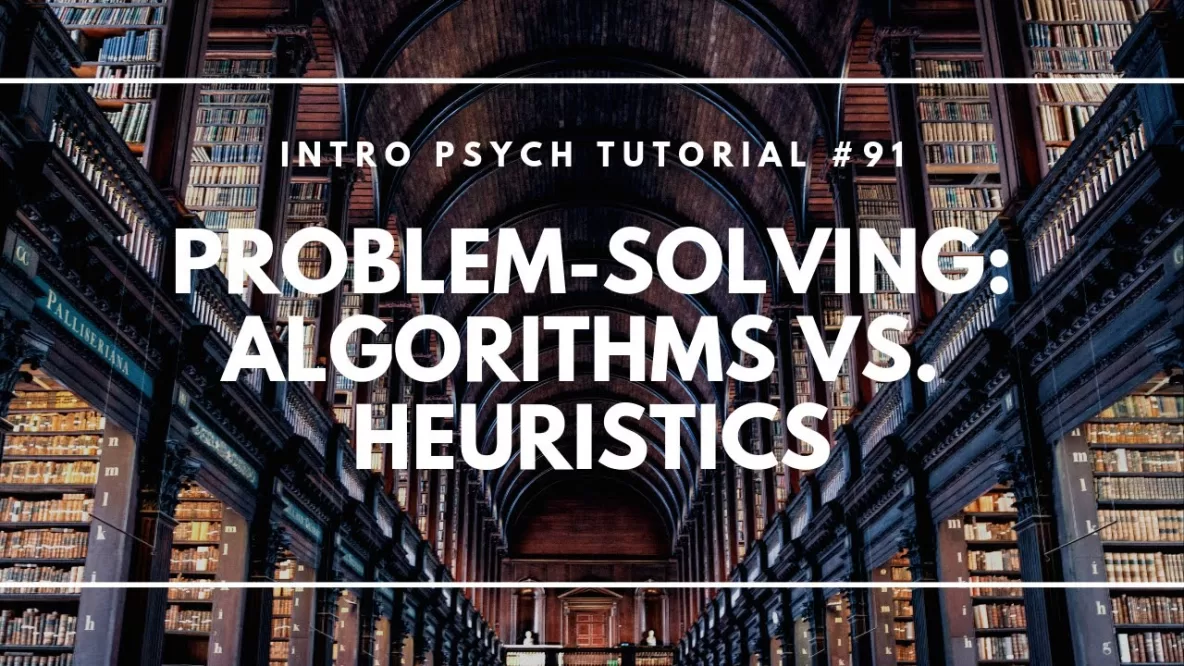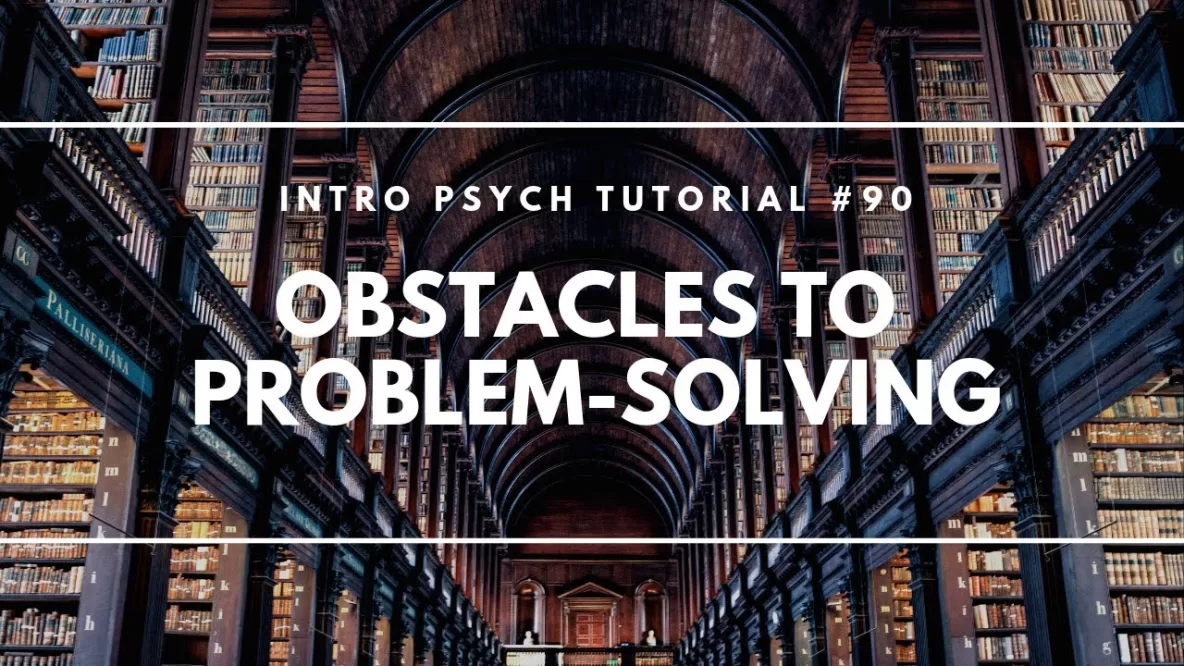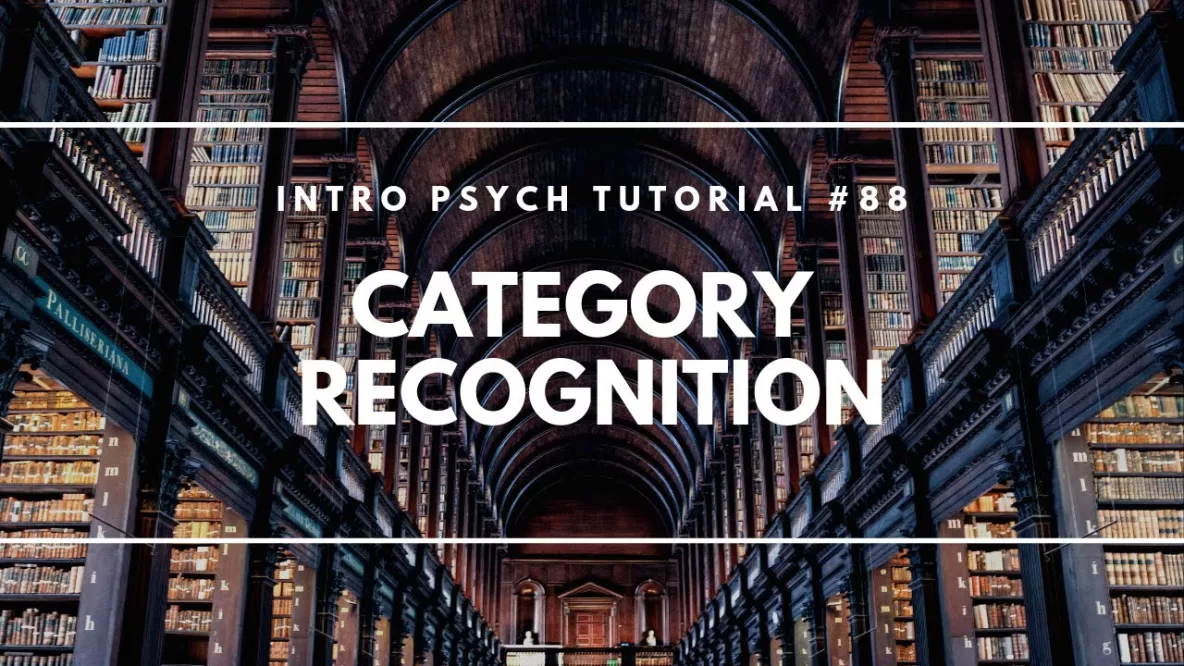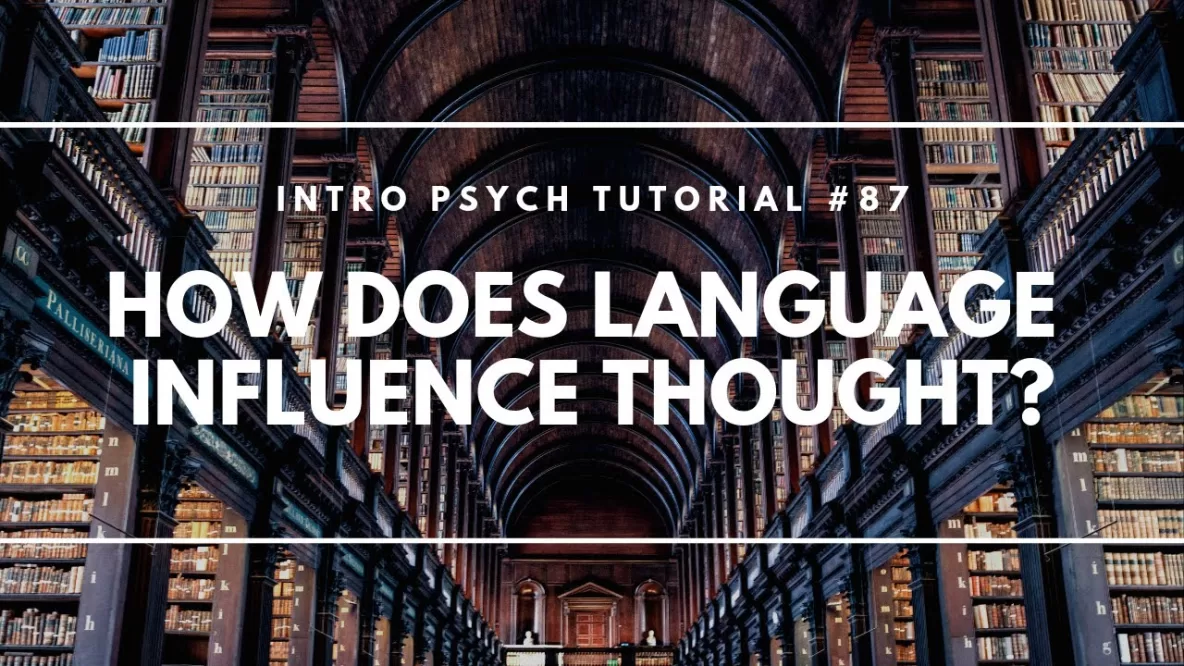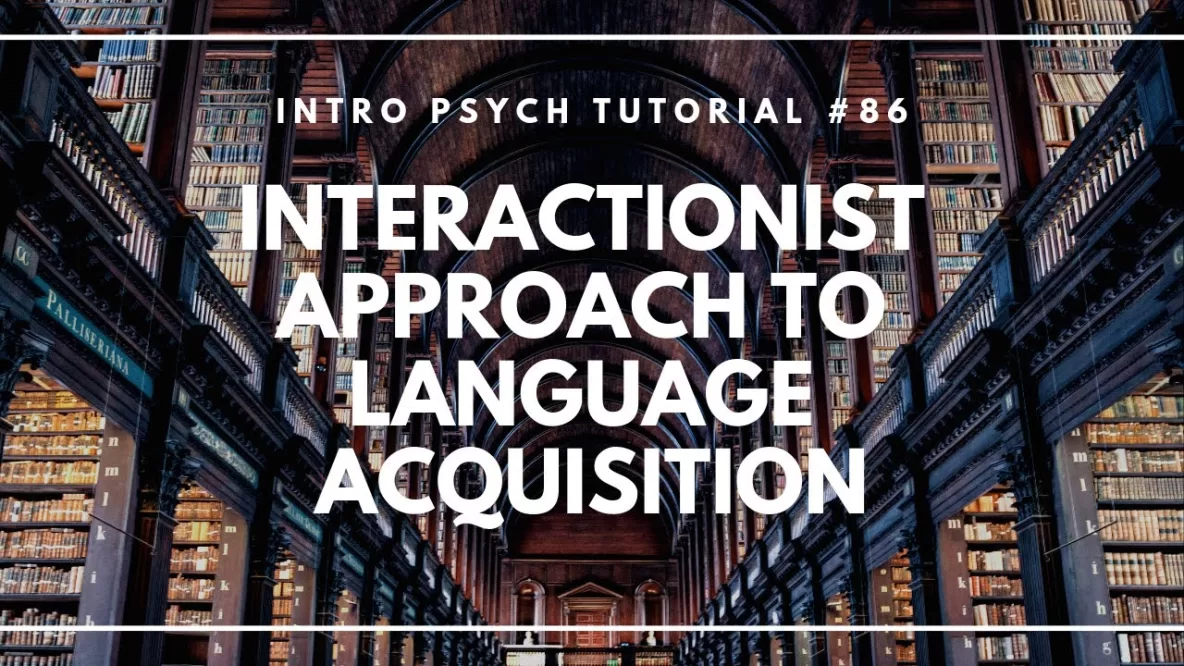In this video I explain the difference between an algorithm and a heuristic and provide an example demonstrating why we tend to use heuristics when solving problems. While algorithms provide step-by-step procedures that can guarantee solutions, heuristics are faster and … Read More
Obstacles to Problem Solving
In this video I introduce several potential obstacles to problem-solving including overconfidence, illusory superiority, belief bias, and belief perseverance. Then I describe a “consider the opposite” strategy for potentially reducing the influence of bias when interpreting evidence that supports or … Read More
Problem Solving
In this video I introduce several concepts related to problem-solving. I begin with mental set, which refers to our tendency to rely on approaches that have worked in the past. Similarly, functional fixedness refers to our tendency to think of … Read More
Category Recognition
In this video I consider how language can help us to organize thought and create more precise concepts and categories. This raises the question of how we recognize new stimuli as being part of a particular category. Protoype theory suggests … Read More
How Does Language Influence Thought?
In this video I consider the relationship between language and thought. The Whorf-Sapir hypothesis, or linguistic relativity hypothesis, suggests that one’s language influences one’s perception of the world. While evidence is mixed on just how language influences thought, there are … Read More
The Interactionist Approach to Language Acquisition
In this video I describe the interactionist approach to language acquisition. This approach recognizes our genetic predisposition for language and considers how the social environment plays a role in that development. Children are learning more than just vocabulary and syntactical … Read More

